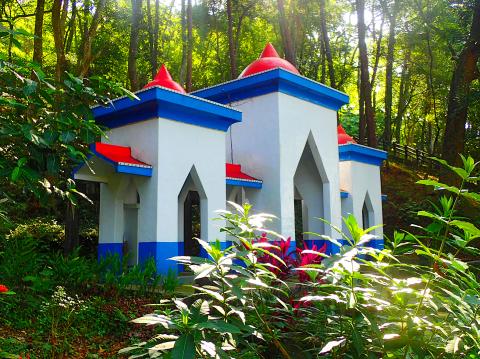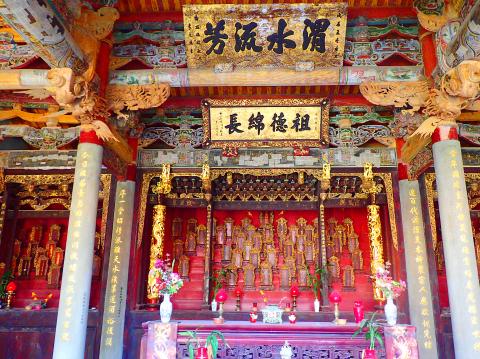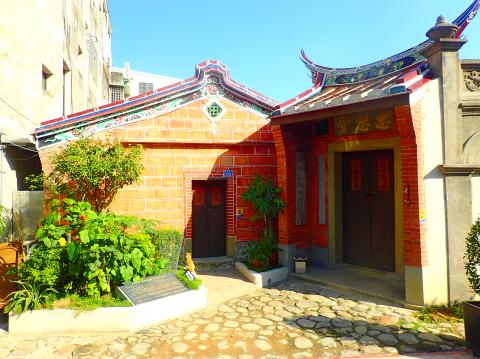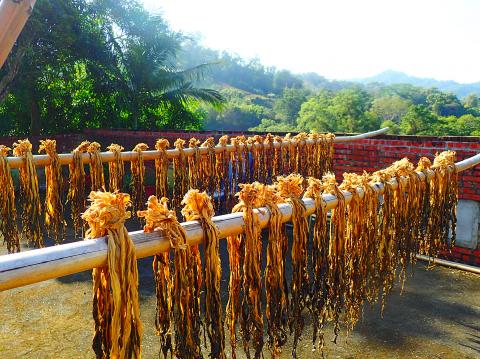Between 15 and 20 percent of Taiwan’s Han Chinese population are of Hakka descent. The Hakka (客家; “guests”) came to Taiwan from parts of southern and eastern China, and their ancestors are thought to have migrated down from further north many centuries ago to escape persecution there.
Apart from having their own language, the Hakka also have their own distinct cultural traditions, of which the most immediately apparent is the delicious food. Most Hakka settled in today’s Taoyuan City and Hsinchu and Miaoli counties, plus smaller groups in Hualien and Taitung counties, and Kaohsiung City.
Although Hakka were among the first Han immigrants to arrive in Taiwan, discriminatory immigration policies during the early part of the Qing dynasty meant that when they were finally allowed to settle on Taiwan, most of the best agricultural land (in the warmer, sunnier south) had already been claimed by the Hoklo (Han Chinese from Fujian province), who often regarded the new arrivals with distrust. They therefore settled the barren land of the central mountain foothills, where they in turn displaced the Aboriginal natives.

Photo: Richard Saunders
Today the towns of Hakka country are well worth exploring. Best-known (and therefore the most touristy) are Beipu (北埔), in southern Hsinchu County, and Nanjhuang (南庄) in the north of neighboring Miaoli. Both deserve a leisurely visit, despite the inevitable weekend crowds that flock to them nowadays. However, if quaint old buildings are your thing, Nanjhuang or Hsinpu (新埔) are a better bet. The few old buildings left in Beipu are less interesting than its food and culture. With 98 percent of its inhabitants identifying themselves as Hakka, Beipu is perhaps the best place to learn a bit about Hakka culture. The town was founded by one Chiang Hsiu-luan (姜秀鑾), who took up the challenge laid down by a local magistrate in 1834 to open up the area southeast of Teckcham (today’s Hsinchu city), where Saisiyat Aborigines were clashing with the Chinese settlers.
Chiang and his cronies succeeded in driving the Aborigines deeper into the mountains and made his home in what became the town of Beipu. In the early years of the Japanese era, Beipu flourished thanks to the nearby coal mines as miners patronized establishments around the town. At about the same time, in 1907, the town was the scene of the Beipu Uprising, the first armed revolt against the Japanese colonial government. In November that year, a group of Hakka and Aboriginal insurgents, angry with perceived oppression at the hands of their overlords, attacked and killed nearly 60 local Japanese officials and their family members. Over the following days, the Japanese retaliated, killing over a hundred Hakka. Beipu’s coal mines closed many decades ago, but today the town is flourishing once more, thanks to its popularity among local tourists. It can get busy on weekends, but since most visitors rarely stray far from the town center eateries, it’s never hard to find a little peace.
Buses from Hsinchu drop passengers off at the edge of the compact old part of town, just a minute’s walk from Beipu’s best remaining old houses, in Miaocian Street (廟前街). The town car park is a block north. Nansing Street (南興街), beside the bus station, is lined with eateries selling Hakka food and souvenir shops. Look out during your walk around town for delicious dried persimmons (柿餅); you might also see slices of turnip or the leaves of meigan cai (梅干菜) drying in the sun. Both are staple ingredients of Hakka cuisine.

Photo: Richard Saunders
Walking south along Miaocian Road, the first historic building on the left is the unassuming little Jinguangfu Hall (金廣福公館), built in 1835, the year the town was established. Next to it, set back from the road behind a wall, Tianshuitang (天水堂), built around the same time, is still owned and inhabited by descendants of Chiang.
A couple of doors down is a building from a century later, the Chiang A-hsin Residence (姜阿新宅), built in the 1940s by another member of the Chiang dynasty to receive his foreign business clients. In contrast to the Chinese-style architecture of the other two buildings, this one was heavily influenced by Western designs, as was the custom in Japanese-ruled Taiwan, when Western architecture was considered progressive and modern. It’s currently being restored, and is hidden underneath a mass of scaffolding.
Tzu Tian Temple (慈天宮) at the end of Beipu Street (北埔街) was established in the mid-1800s, and is the town’s main center of worship. The narrow alleyway along the left wall of the temple has the only remaining example of Beipu’s famous “alarm stones,” which were a novel way of telling early inhabitants when strangers were around. It’s paved with large, flat slabs of natural rock, and occasional slabs were laid so that they moved, making a “clunk” sound when trodden on. The locals of course all knew where these stones were, and took care to avoid them

Photo: Richard Saunders
Just behind the old part of town, a low, wooded hill has been turned into Xiuluan Park (秀巒公園, named in honor of the town’s founder), and is an attractive spot for a stroll, with some fine mature woodland. Dotted along the wooded slopes, which are crisscrossed by a network of short trails, are several pavilions, a white statue of Guanyin, and a blue-and-white monument containing a stele commemorating the founding of the town. There’s a great view from the southernmost pavilion on the ridge.
Richard Saunders is a classical pianist and writer who has lived in Taiwan since 1993. He’s the founder of a local hiking group, Taipei Hikers, and is the author of six books about Taiwan, including Taiwan 101 and Taipei Escapes. Visit his Web site at www.taiwanoffthebeatentrack.com.

Photo: Richard Saunders

Photo: Richard Saunders

Aug. 4 to Aug. 10 When Coca-Cola finally pushed its way into Taiwan’s market in 1968, it allegedly vowed to wipe out its major domestic rival Hey Song within five years. But Hey Song, which began as a manual operation in a family cow shed in 1925, had proven its resilience, surviving numerous setbacks — including the loss of autonomy and nearly all its assets due to the Japanese colonial government’s wartime economic policy. By the 1960s, Hey Song had risen to the top of Taiwan’s beverage industry. This success was driven not only by president Chang Wen-chi’s

Last week, on the heels of the recall election that turned out so badly for Taiwan, came the news that US President Donald Trump had blocked the transit of President William Lai (賴清德) through the US on his way to Latin America. A few days later the international media reported that in June a scheduled visit by Minister of National Defense Wellington Koo (顧立雄) for high level meetings was canceled by the US after China’s President Xi Jinping (習近平) asked Trump to curb US engagement with Taiwan during a June phone call. The cancellation of Lai’s transit was a gaudy

From Godzilla’s fiery atomic breath to post-apocalyptic anime and harrowing depictions of radiation sickness, the influence of the nuclear bombings of Hiroshima and Nagasaki runs deep in Japanese popular culture. In the 80 years since the World War II attacks, stories of destruction and mutation have been fused with fears around natural disasters and, more recently, the Fukushima crisis. Classic manga and anime series Astro Boy is called “Mighty Atom” in Japanese, while city-leveling explosions loom large in other titles such as Akira, Neon Genesis Evangelion and Attack on Titan. “Living through tremendous pain” and overcoming trauma is a recurrent theme in Japan’s

As last month dawned, the Democratic Progressive Party (DPP) was in a good position. The recall campaigns had strong momentum, polling showed many Chinese Nationalist Party (KMT) lawmakers at risk of recall and even the KMT was bracing for losing seats while facing a tsunami of voter fraud investigations. Polling pointed to some of the recalls being a lock for victory. Though in most districts the majority was against recalling their lawmaker, among voters “definitely” planning to vote, there were double-digit margins in favor of recall in at least five districts, with three districts near or above 20 percent in